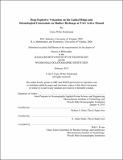| dc.contributor.advisor | Robert A. Sohn and S. Adam Soule. | en_US |
| dc.contributor.author | Pontbriand, Claire Willis | en_US |
| dc.contributor.other | Woods Hole Oceanographic Institution. | en_US |
| dc.date.accessioned | 2013-06-17T19:03:01Z | |
| dc.date.available | 2013-06-17T19:03:01Z | |
| dc.date.copyright | 2013 | en_US |
| dc.date.issued | 2013 | en_US |
| dc.identifier.uri | http://hdl.handle.net/1721.1/79155 | |
| dc.description | Thesis (Ph. D.)--Joint Program in Oceanography/Applied Ocean Science and Engineering (Massachusetts Institute of Technology, Dept. of Biology; and the Woods Hole Oceanographic Institution), 2013. | en_US |
| dc.description | This electronic version was submitted by the student author. The certified thesis is available in the Institute Archives and Special Collections. | en_US |
| dc.description | Cataloged from student-submitted PDF version of thesis. | en_US |
| dc.description | Includes bibliographical references. | en_US |
| dc.description.abstract | Seafloor digital imagery and bathymetric data are used to evaluate the volcanic characteristics of the 85°E segment of the ultraslow spreading Gakkel Ridge (9 mm yr-¹). Imagery reveals that ridges and volcanic cones in the axial valley are covered by numerous, small-volume lava flows, including a few flows fresh enough to have potentially erupted during the 1999 seismic swarm at the site. The morphology and distribution of volcaniclastic deposits observed on the seafloor at depths of ~3800 m, greater than the critical point for steam generation, are consistent with having formed by explosive discharge of magma and CO² from source vents. Microearthquakes recorded on a 200 m aperture seismometer network deployed on the Trans-Atlantic Geotraverse active mound, a seafloor massive sulfide on the Mid-Atlantic Ridge at 26°N, are used to image subsurface processes at the hydrothermal system. Over nine-months, 32,078 local microearthquakes (ML = -1) with single-phase arrivals cluster on the southwest flank of the deposit at depths <125 m. Microearthquakes characteristics are consistent with reaction-driven cracking driven by anhydrite deposition in the shallow secondary circulation system. Exit fluid temperatures recorded at diffuse vents on the mound during the microearthquake study are used to explore linkages between seismicity and venting. | en_US |
| dc.description.statementofresponsibility | by Claire Willis Pontbriand. | en_US |
| dc.format.extent | 138 p. | en_US |
| dc.language.iso | eng | en_US |
| dc.publisher | Massachusetts Institute of Technology | en_US |
| dc.rights | M.I.T. theses are protected by
copyright. They may be viewed from this source for any purpose, but
reproduction or distribution in any format is prohibited without written
permission. See provided URL for inquiries about permission. | en_US |
| dc.rights.uri | http://dspace.mit.edu/handle/1721.1/7582 | en_US |
| dc.subject | Joint Program in Oceanography/Applied Ocean Science and Engineering. | en_US |
| dc.subject | Earth, Atmospheric, and Planetary Sciences. | en_US |
| dc.subject | Woods Hole Oceanographic Institution. | en_US |
| dc.title | Deep explosive volcanism on the Gakkel Ridge and seismological constraints on Shallow Recharge at TAG Active Mound | en_US |
| dc.type | Thesis | en_US |
| dc.description.degree | Ph.D. | en_US |
| dc.contributor.department | Joint Program in Oceanography/Applied Ocean Science and Engineering | en_US |
| dc.contributor.department | Woods Hole Oceanographic Institution | en_US |
| dc.contributor.department | Massachusetts Institute of Technology. Department of Biology | |
| dc.identifier.oclc | 847514282 | en_US |
